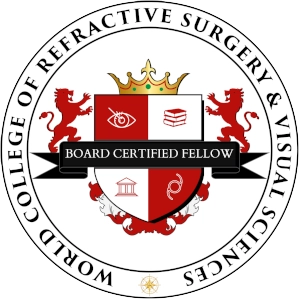Presbyopia
With age, everyone needs reading glasses for close-up vision
Cause of presbyopia
Presbyopia correction
Until recently, reading glasses were the primary option for people with presbyopia. Today, a few surgical procedures are available that may help some people to avoid reading glasses:
| Lens procedures | |
| Laser lens exchange | Multifocal synthetic lenses replace the natural lens of the eye. They can provide relief for presbyopia and at the same time for nearsightedness or farsightedness. |
| Eye laser procedures | |
| Monovision LASIK | Special LASIK procedure with one eye being treated for distance vision and the other eye (usually the non-dominant eye) for near vision. |
| PresbyMAX LASIK | A specialized laser procedure designed for patients with ametropia and presbyopia. This technique reshapes the cornea, creating a central zone optimized for near vision and a peripheral zone for distance vision. The result is a high depth of field and excellent visual quality across all distances. |






